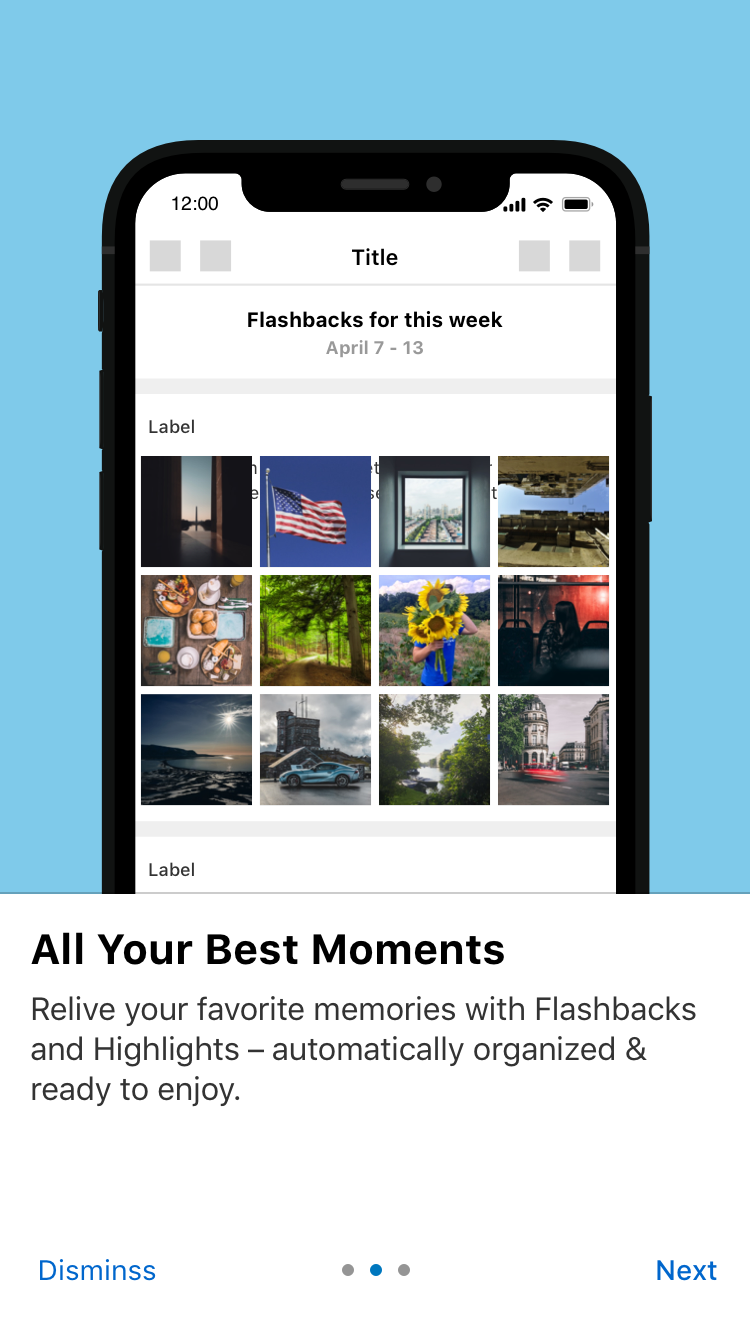CLOUD APP USER ONBOARDING
Iterative testing of new user onboarding for a personal cloud app.
Research Objectives
The first goal of this study was to gather feedback on the design prototype for the new user onboarding process. The second goal was to iteratively assess the steps involved during the onboarding steps to make design modifications informed by research.
I wanted to observe participant actions for each step of onboarding, and gather feedback on the overall onboarding process. Standard onboarding steps involved an overview of the app's value, sign in flow, data class selection for cloud backup, user permissions, and profile setup.





Methodology
I recruited participants representative of the target population already defined through collaboration with product managers and data analysts.
To achieve the research goals, I first identified the types of data needed and chose the most suitable methods needed to be successful.
For the first phase, I conducted in-depth interviews to gather participant feedback on the guided onboarding steps and their experiences. I sought to understand user comprehension of the content, expectations throughout, and to gauge overall sentiment.
This was followed by an observational approach through usability testing. To address the research objectives, it made sense to capture user comprehension, task success, time on task, and errors made.
Findings & Implications
The step-by-step onboarding process was found to have an appropriate number of steps, and the layout of each step was easy to understand and act upon for the participants. The overall onboarding process was seen as streamlined and having a familiar flow as other apps, with consistency in the designs.
With the app requesting access to many types of user data, some became wary of providing open access to every data class. The text in some steps were mentioned as being “too light to read” and blending in too much, decreasing the readability of information.
The definition of 'backup' and 'sync' were consistent when assessing the terms and concepts individually. With the concept of syncing contacts, the participants' definition and distinction between backup and sync became unclear. 'Backup' was interpreted as being a manual process, while 'sync' being automatic.
The participants reported security and privacy being of big concern when signing up and granting permissions to cloud storage apps.




Impact & Reflection
Based on the multiple rounds of testing, the internal stakeholders were able to make numerous modifications to the designs and flows in the onboarding process. Upon continuous testing to capture metrics, the newer designs showed marked improvement in task success with less errors.
By conducting these studies, I was able to help the team to better understand user needs and expectations, and typical behaviors during the onboarding process.
With initial interactions being crucial to app adoption and engagement, I was able to improve end user satisfaction and enable the app experience to have a competitive advantage.
Over time, we've found the design changes to have a positive impact, by helping users understand the product from the initial engagement. We've incorporated feedback and research results to improve the onboarding experience and usability, leading to app adoption and retention.






